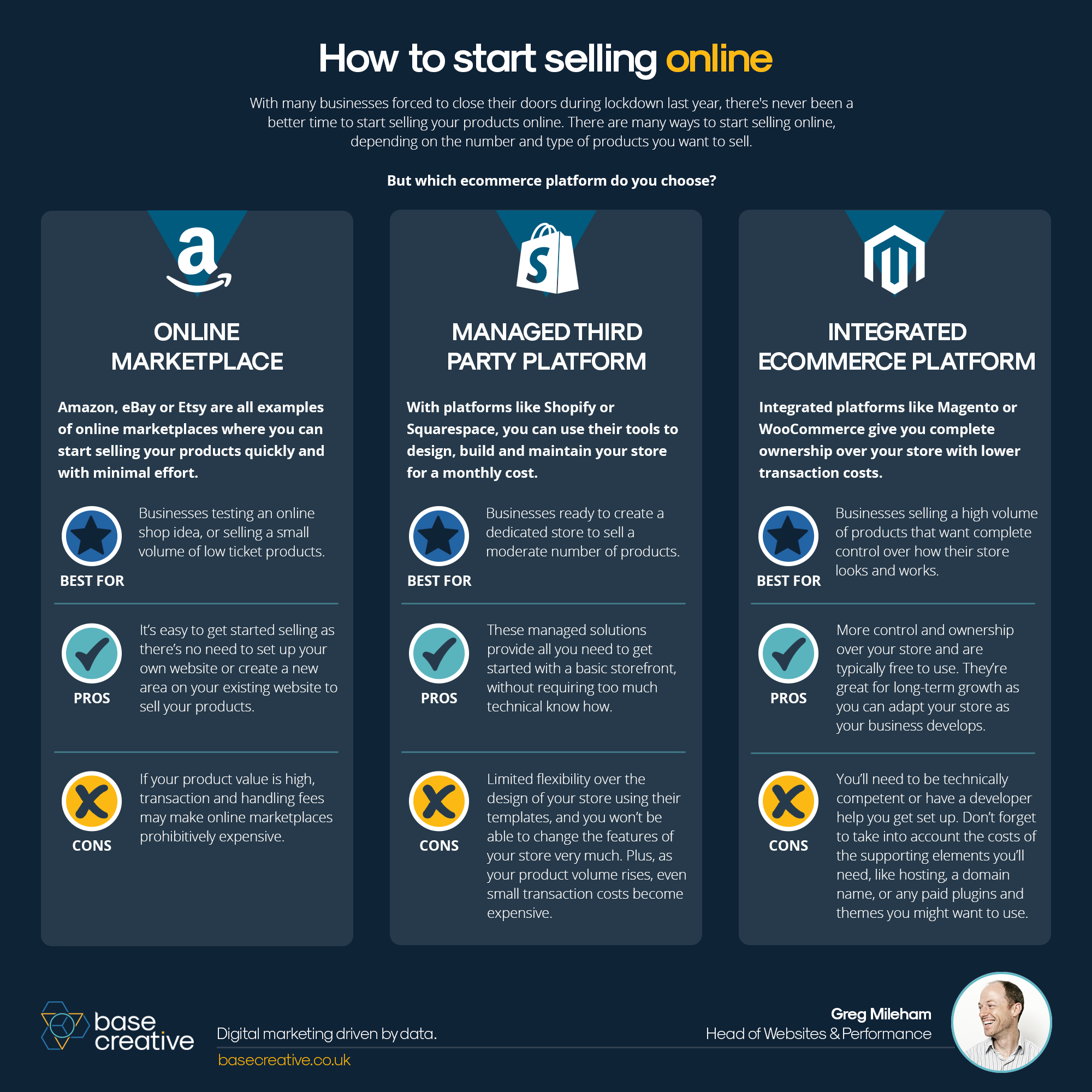TABLE OF CONTENTS
TABLE OF CONTENTS
Other Usefull Contents
You can see many success stories from our customers, and you may be one of them in the future
Unlock the Power of Mobile Commerce: Propel Your Business Forward
Read MoreDiscover how to harness mobile commerce to enhance your business growth. Learn strategies for optimizing the mobile shopping experience and increasing consumer engagement.
Read MoreDiscover the benefits of mobile commerce and how it can transform your business. Learn effective strategies for maximizing sales and customer engagement through mobile-optimized shopping experiences.
Read More














Welcome to the practical guide on how to start an e-commerce business in 2023. With the pandemic driving more consumers online, e-commerce is booming and offers an opportunity for entrepreneurs to start their own businesses. However, starting an e-commerce business requires careful planning and execution to ensure success in today's competitive market. This guide provides step-by-step instructions on how to start an e-commerce business, from inquiring your market and niche to launching your online store. By following these steps and continuously adapting to changing market trends and customer needs, you can build a successful e-commerce business that meets the demands of today's digital consumers.
Step 1: Research your Market and Niche
Before starting your e-commerce business, you need to identify your target audience and niche. You can start by investigating the current trends and demands of the market. Look at your competition, assess their strengths and weaknesses, and identify the gaps in the market that you can fill. Analyze the demographics, behaviors, and preferences of your target audience and build your brand around their needs and interests.
Conduct market research using tools like Google Trends, social media analytics, and keyword research to identify the popular products in your niche. You can also use survey tools like SurveyMonkey to get feedback from your potential customers.
Step 2: Choose a Platform for Your E-commerce Business
There are numerous e-commerce platforms available, such as Shopify, WooCommerce, Magento, and more. Choose a platform that best suits your business needs, budget, and technical skills. Consider the platform's features, functionality, ease of use, pricing, and scalability.
If you're not technically inclined, it's best to choose a platform that offers support and guidance for beginners. For example, Shopify offers a user-friendly interface and numerous apps and themes that make it easy to set up an e-commerce store.
Step 3: Create a Business Plan
Develop a comprehensive business plan that outlines your e-commerce business's mission, vision, goals, strategies, and financial projections. Your business plan should also include your target market, competitive analysis, marketing plan, pricing strategy, and operational plan.
Your business plan should serve as a blueprint for your e-commerce business, guiding your decision-making processes and helping you achieve your goals.
Step 4: Register Your Business and Obtain the Necessary Permits
Register your e-commerce business with the relevant government agencies and obtain all necessary permits and licenses required by law. This includes registering your business name, obtaining a tax ID number, and obtaining any required state or local permits.
You can register your business online or through a lawyer. Check with your local government offices to determine the specific requirements for your business type.
Step 5: Choose and Register a Domain Name
Select a domain name that reflects your brand and is easy to remember. Your domain name should be short and descriptive, making it easy for customers to find your website. Register your domain name with a reputable domain registrar and ensure that it's available across all social media platforms.
Step 6: Set Up Your E-commerce Website
Design and develop your e-commerce website, taking into account your branding, user experience, and search engine optimization (SEO) strategies. Your website should reflect your brand, be easy to navigate, and load quickly.
Ensure that your website is mobile-friendly, responsive, and easy to navigate. Use e-commerce website builders like Shopify, WooCommerce, or BigCommerce to make setting up your website easy.
Step 7: Source Your Products
Identify the products you want to sell and source them from reliable suppliers. You can choose to source products from manufacturers, wholesalers, or drop shippers. Ensure that you're offering quality products at competitive prices to attract and retain customers.
Consider partnering with local suppliers or manufacturers to reduce shipping costs and improve customer experience. You can also use supplier directories like Alibaba, ThomasNet, or Wholesale Central to find suppliers.
Step 8: Set Up Your Payment Gateway
Select a payment gateway that suits your business needs and integrates with your e-commerce platform. Offer multiple payment options, including credit/debit cards, PayPal, and Apple Pay, to ensure that your customers can pay using their preferred method.
Choose a payment gateway that offers secure transactions and fraud detection measures. You can use popular payment gateways like PayPal, Stripe, or Square to make it easy for customers to pay for your products.
Step 9: Launch Your E-commerce Business
Once you have completed all the necessary steps, it's time to launch your e-commerce business. Create a launch plan that includes social media and email marketing campaigns, paid advertising, and influencer partnerships.
Make sure your website is fully functional, your products are in stock, and your shipping and return policies are clear to customers. Consider offering special promotions or discounts to attract customers during your launch.
Step 10: Monitor Your Performance and Make Adjustments
After launching your e-commerce business, monitor your performance and make adjustments as necessary. Track your website traffic, conversion rates, and sales using analytics tools like Google Analytics or Shopify Analytics.
Use this data to identify areas where you can improve your e-commerce business, such as optimizing your website for search engines, improving your product descriptions, or adjusting your pricing strategy.
Continue to test and optimize your e-commerce business to improve your performance and grow your revenue over time.
Conclusion
Starting an e-commerce business in 2023 requires careful planning, research, and execution. Follow these steps to start your e-commerce business and make it successful in the long run. Remember to always prioritize your customers, offer quality products and services, and continuously adapt to changing market trends and customer needs. With dedication and hard work, you can build a successful e-commerce business that meets the demands of today's digital consumers.